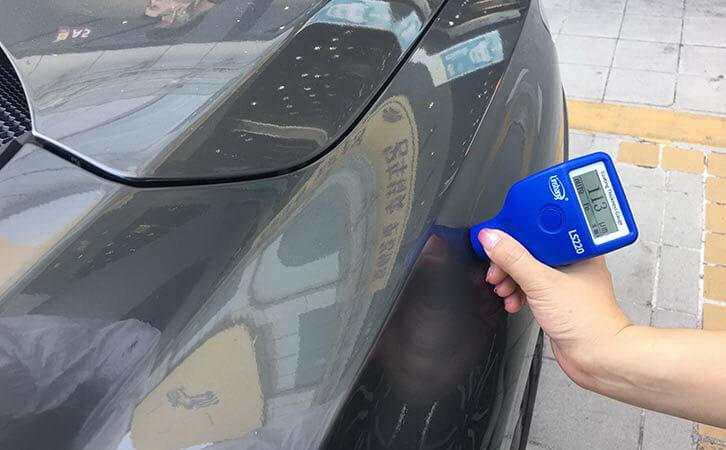How to Analyze the Data of Car Paint Meter?
In the second-hand car industry, in order to ensure the rights of buyers and sellers, in the process of second-hand car transactions, professional car paint meters are used to determine paint thickness sprayed on vehicles, but why do we measure this value?
Most used cars have undergone some cleaning, maintenance and repair before the second transaction. Cleaning is to remove dust and some other pollutants from the vehicle body and facilitate subsequent inspections. Maintenance is mainly to periodically perform certain inspections and measures on the car to maintain the appearance and performance of the car. These two steps will not cause damage or change to the paint on the car surface. The repair is often a series of steps for those with scratches on the car shell, erosion by acid rain, or oxidation, dents to restore the original look. This series of repair steps will change the car paint thickness, but even experienced experts can hardly judge the paint thickness visually. With the continuous improvement of car repair technology (such as nano coating technology), it becomes more necessary to use a professional car paint meter to determine paint thickness.
So how do we analyze the data of the car paint meter?
Professional car paint meters are available in two units: mil and micrometer (μm). These two units are common thickness units, in which mil is an inch unit and micron is a metric unit. Unit, 1mil = 25.4μm.
But the main thing is that there is no standard thickness for automotive paint. Different automotive manufacturers use basically different formulations and specifications of automotive paints and coatings. Slightly different specifications of paints and coatings are used in different automotive parts. For example, the paint thickness on the roof of some cars may be only 75μm and the paint thickness on the sill plates of some cars may be as high as more than 400μm.
If you want to judge the paint condition of a car's surface, it is best to analyze from the consistency of the data. The paint thickness of different parts of a car may be different, but if we measure multiple points in different parts, we can determine the average level of paint thickness in various parts of a car. If the paint thickness in some places exceeds the average level of this part means that there is a possibility of repair at this position.
In addition to the car's own paint, some car owners may spray a layer of transparent paint (varnish) to protect the car's original paint. The thickness of such paint is generally within 35 + 50μm. This situation can also be taken into consideration when measuring.
All in all, the data of car paint meter is more to help users detect paint thickness on the car surface in a scientific way. The overall paint spraying situation still needs to combine the structure of the car itself and the brand of the car, which is why it is not possible to rely entirely on the tool to evaluate the car.
- High precision coating thickness gauge for used car
- Automotive paint protection films coating thickness gauge
- Plating Thickness Measuring Instrument for Detecting Anti-corrosion Coating
- Linshang LS220, LS191, LS160A– Necessary for Car Cover Inspection
- Coating Thickness Gauge for Second Hand Vehicle
- Zero Adjustment Step of Coating Thickness Gauge
